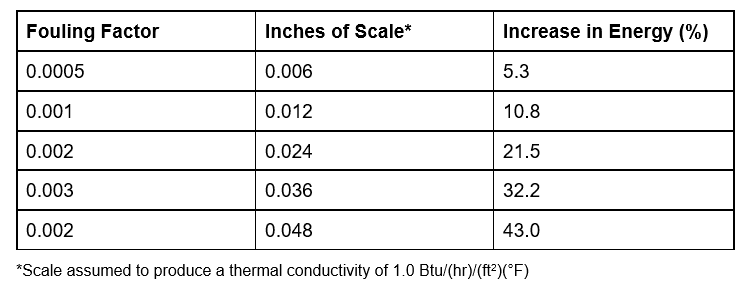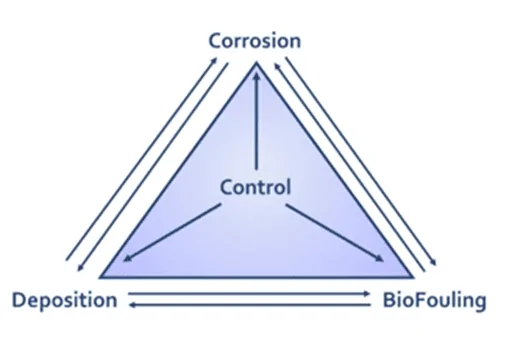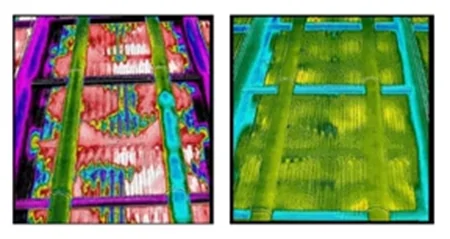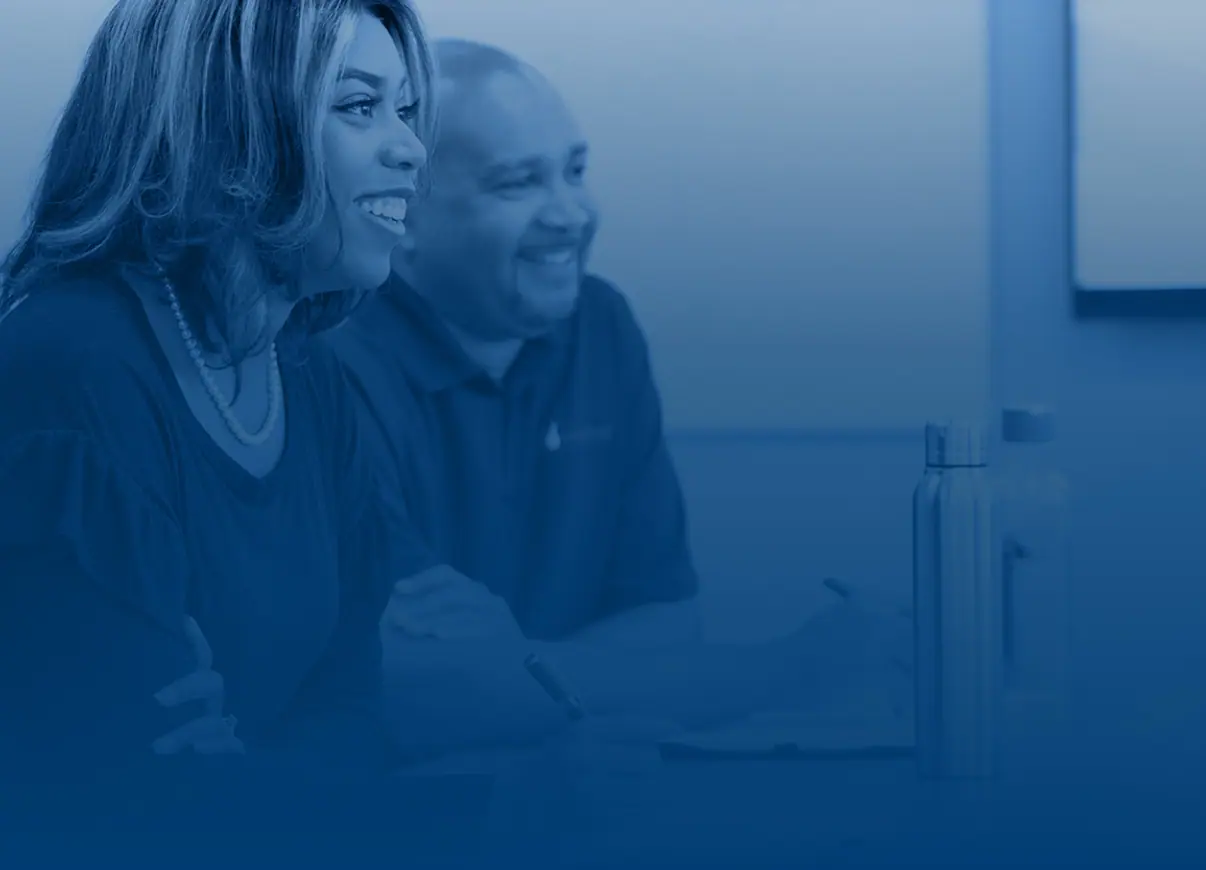-
USA - English
- Locations
- SDS Access
- CTVista®+ Login
Sustainability is the quality of not being harmful to the environment or depleting natural resources, thereby supporting long-term ecological balance. Avoiding waste, non-renewable resources, and pollution, and conserving resources are all actions used to support sustainability initiatives.
In 2022, data center spending and expansion will hit $200 billion. According to a Gartner® report, data centers are making the greatest investments in the following areas to support sustainability and cut operating costs.
1. More Efficient Use of Space
2. Edge Computing
Adding equipment directly to the environment where data is being generated. This includes the Internet of Things (IoT), which connects some 80–85 billion smart devices to the internet.
3. Artificial Intelligence (AI)
Increased investment in AI to manage how computing is performed.
4. Green, Sustainable Technologies
Initiatives and improvements to reduce energy and water use and minimize carbon footprint.
Proper cooling water treatment can effectively help data centers support sustainability initiatives by reducing water and electrical use. However, it is important to first understand why cooling is essential to data center operation and how it impacts water and energy consumption.
As data centers run power to their equipment, they generate waste heat that hinders equipment effectiveness. CPUs that are not cooled properly will not run efficiently, and overheated CPUs can shut down a server.
As electricity flows through a CPU, flipping the transistors off and on, it generates waste heat. A server blade can generate anywhere from 2,000–4,000 BTUs per hour.
Heat is removed from a data center through computer room air handlers (CRAHs), computer room air conditioners (CRACs), and traditional air ducts. A CRAC has a built-in direct expansion unit. Like any other conditioner, it uses a refrigerant that removes heat from the CPU to cool the unit. Older CRAC models operate less effectively, turning off and on as needed. Newer units have a modulated compressor so they can scale up as cooling needs increase.
Air handlers are very effective for cooling. They operate by blowing warm air from the facility over a coil filled with chilled water typically supplied by a chilled water plant. CRAHs can have variable frequency drives that modulate the fan or the pumping speed so only the required amount of electricity is consumed to remove heat from the facility.
Existing data centers can reduce energy usage by optimizing the cooling process for air handling and cooling water. Utilizing evaporative cooling, for example, can reduce electrical consumption because it can remove the same amount of heat as chillers while using less power. It is much less electrically consumptive than a compressor and a fan. Evaporative cooling also requires less energy than a heat pump.
Waste heat can also be captured and recycled. For instance, an Amazon facility in Seattle uses their waste heat to warm a nearby biosphere project.
The Green Grid was formed by a group of data centers that recognized the high level of energy consumption in their industry and developed a set of metrics for monitoring power usage and electricity consumption: Power Usage Effectiveness, sometimes referred to as efficiency, and Data Center Infrastructure Efficiency. Related metrics include Carbon Usage Effectiveness and Water Usage Effectiveness.
PUE is a measure of how much of the total facility power is consumed by IT equipment power use. It is calculated using the following equation:

An average data center PUE is approximately 2.5, but a very efficient data center may have a PUE of less than 1.6.
DCIE is the percent of IT power used in relation to the total energy consumed by the facility. It is calculated as the inverse of PUE. A PUE of 2.5 is equivalent to 40% DCIE.
CUE measures the carbon gas emitted by a data center daily and is related to the amount of electricity a data center consumes. 40% of the electricity in the US is generated through clean or green methods, while 60% is being generated by fossil fuels. Therefore, reducing the energy consumed at a data center also reduces carbon dioxide emissions for the power generation needed to keep the data center running.
WUE measures how much water a facility uses for cooling and other building needs.

WUE is an important metric to track for data centers looking to improve on-site sustainability. Reducing or reusing water used for data center processes can help you meet environmental goals while simultaneously realizing cost savings.
A small 2.3 mW data center in the southeast US had an annual spend of approximately $1.3 million. Cooling accounted for 1.035 mW of the power load and PUE was calculated at 2.5.
ChemTreat performed a chemical cleaning of the cooling system to reduce scale, lowering PUE by 0.12 and resulting in a 10% efficiency gain. By lowering the electrical load needed to run the system, related carbon dioxide emissions were also reduced, resulting in an annual electrical savings of $59,000. This easily covered the expense of the chemical cleaning.
The table below shows how scale impacts energy efficiency.

Results are examples only. They are not guaranteed. Actual results may vary.
One very effective way to cool data center processors is direct liquid cooling, the process of submerging the processor computer board in a liquid. Allied Control was able to achieve a PUE of 1.02 in 2015 with a non-conductive dielectric fluid, reducing cooling power consumption by 95% and overall facility power consumption by 50%.
Previously, using thermoelectric fluids was problematic because many were toxic. However, Allied was able to produce an environmentally friendly fluid for their system.
Similarly, Microsoft achieved a PUE of 1.07 by submersing a data center in the ocean. To prevent accumulation of ocean particles and reef material (which could cause a potential increase in electrical consumption), high-velocity cooling pumps were used to stop sea life from attaching to and proliferating in the cooling channels.
WUE can be improved by using effective water treatment to mitigate corrosion, deposition, and biofouling issues. A system free of deposition, biofouling, and corrosion uses less energy and water.
WUE can be impacted by geographic region and weather. For example, local water sources may contain high levels of dissolved minerals. Reverse osmosis (RO) can improve water consumption in such environments by generating high-quality makeup water for cooling systems that do not contain the minerals that would otherwise concentrate in the cooling water.

The water treatment triangle above illustrates the interconnectedness of corrosion, biofouling, and deposition. Microorganisms can create biofouling, which leads to corrosion and deposition. Biofouling deposition is some of the most insulative deposition cooling systems can experience. Applying chemical water treatment inhibitors helps reduce these effects, which can negatively impact data center equipment life, efficiency, and productivity.
Approximately 20% of data center outages are directly related to cooling system failures, including IT and water-cooling equipment. For a 10-mW data center, the downtime required to treat water system issues, such as excess scale or fouled equipment, can cost as much as $5,600 per minute or up to half a million dollars per incident. Proper water treatment is an important component of maintaining reliable operation and keeping costs low.
In addition to reducing energy, power, and water consumption, electronic disposal efficiency should be considered. This includes material disposal such as the percentage of decommissioned electronics and equipment recycled.
The data center productivity (DCP) metric looks directly at the quality of data center processing versus the work used to achieve it.
Considering water treatment when commissioning a new data center is important for preserving proper equipment operation and longevity. Nearly 70% of early equipment failure can be traced back to design, installation, or setup deficiencies. Preoperational cooling system treatment can impact the reliability and duty life of those systems.
In the construction timeline, it is wise to consult with water treaters as early as the design phase. Without water treatment knowledge, procurement may make decisions that aren’t optimal for operating cooling systems in the long run. For example, selecting a galvanized steel sump for a 250-ton cooling tower would save $4,000–$5,000 over one made of stainless steel. However, galvanized steel is much more reactive than stainless steel, can be more expensive to treat, and would likely need to be replaced sooner.
At the latest, water treatment experts should be brought in during the acceptance or contractor testing phase because construction companies or contractors will often add water to hydrotest equipment but rarely use the necessary inhibitors or biocides.
When contractors hydrotest equipment with untreated water, it will often be left stagnant until the facility is brought on-line. The stagnant water can cause corrosion and microbial blooms. If left stagnant for more than 1–2 weeks, a special chemistry will need to be applied. Otherwise, when the data center comes on-line, the water may be rusty orange and full of iron particulate, making it difficult to achieve a good start-up phase because initial testing will be impacted by the water’s impaired quality.
New equipment must be cleaned and degreased prior to operation to remove rust preventatives and oil or grease used to cut threaded joints, etc. to reduce bacteria on surfaces. Many of the materials present in new equipment are organic and can act as food for bacteria and bugs, increasing corrosion potential.
Passivating cooling surfaces is also important for helping protect copper, brass, and steel equipment from corrosion by developing a protective metal oxide coating on water-contacting equipment.
To remediate poor startup practices, ChemTreat utilizes programs without corrosive acids to pull rust from the surface without dissolving the equipment’s base metal. Microbial contamination is cleaned with hydrogen peroxide-based products that degrade into the base compounds of oxygen and water.
Mitigating Poor Pre-Operation Results: Cooling System Cleaning Case Study
Mineral scale in a cooling system was impairing flow and prevented adequate cooling. ChemTreat used a thermal infrared camera to check the water flow and temperature. Cleaning chemicals were applied, successfully increasing flow and cooling efficiency.

Thermal Images Pre-Cleaning (left) and Post-Cleaning (right)
Results are examples only. They are not guaranteed. Actual results may vary.
Citigroup built a data center using locally sourced and recycled materials to minimize the carbon footprint of construction. Vegetation was incorporated into a wall and the roof to help insulate against heat and open windowpanes were added to provide daylight and natural ventilation.
As a result, this facility uses 30% of the power typically required for a data center of the same size, and 40% of typical heating energy. The RO system saves them approximately 13 million gallons of water per year. This facility was awarded the very first Platinum Leadership in Energy and Environmental Design (LEED) certification.
Data center redundancies include backup equipment that sits idle in case of issues with the primary equipment. Backup equipment generally holds stagnant water, making it prone to pitting corrosion and microbial growth because inhibitors are not regularly flowing. These systems may require extra care and treatment as water sits on the metal surface and promotes corrosion. The rate of equipment wastage can increase over time as the concentration of corrosion byproducts builds up in the stagnant water, depleting existing inhibitors.
Microbial blooms can also occur because rinsing and replenishment of biocides and inhibitors is not taking place in idle systems. Without adequate layup treatment, the corrosion rate can increase 5–50-fold in stagnant systems, and microorganisms can proliferate and create substantial biofouling during that downtime.
Inhibitor Applications
Inhibitors are a common, reliable treatment solution for data centers. However, not all are environmentally friendly, and some phosphate- and zinc-based chemicals are even restricted in certain geographies, causing many data centers to seek phosphate-free options. ChemTreat offers non-phosphate and non-zinc corrosion inhibitor options as part of our FlexPro® product line.
Bacteria Inhibitors: Biocides
Biocide applications usually contain bleach or chlorine to control bacteria. Halogen programs are also available with combination programs of bleach and bromine, which can be less corrosive than bleach alone.
Corrosion Inhibitors
Corrosion inhibitors in closed loops are another standard application in data centers. These include nitrites, azoles for protecting yellow metals, borax-buffered products, and molybdenum.
Scale Inhibitor
Phosphonates and polymers are used in evaporative cooling towers to help prevent mineral scale through crystal modification.
Deposition Inhibitor
Polymer-based deposition inhibitors are applied to help prevent the settling of suspended solids. Open recirculating cooling towers are particularly prone to suspended solids issues. For instance, if a cooling tower is in an area where construction is taking place, the dust and debris in the air can travel into the open system and build up in the cooling water.
Pretreatment/Suspended Solids Treatment
Reverse osmosis can be used to remove minerals from makeup water, which can conserve water by reducing minerals building up in concentration and decreasing the saturation of minerals in the water. This reduces the tendency to form scale and insulate heat exchange surfaces.
Treatment Concerns: Equipment
Data center cooling equipment is generally highly efficient. However, efficiency does not guarantee equipment longevity.
High-efficiency heat exchanger tubes, for example, have very thin walls, and most are rifled to create turbulent flow for more efficient heat transfer. Thin walls allow for high heat transfer rates since the heat does not have to travel through much material. Raw material costs are also lower because there is less material used in construction and the lower weight reduces transportation costs.
However, the thin material does not leave much room for corrosion. Rifles in the metal surface can capture debris from the cooling water and cause corrosion sites and areas for bacteria to proliferate and cause fouling, greatly decreasing equipment efficiency.
Munters
Evaporative cooling is often preferred to chillers in data center cooling applications to improve PUE. Munters is a premier vendor/manufacturer of smaller evaporative coolers often employed by data centers. They manufacture a unique adiabatic media for use in their products.
Their core system, the Oasis® direct evaporative cooling system, is an intelligent cooler that can cool a data center using outdoor air through a heat exchanger without mixing hot and cold air.
An indoor data center can be chilled by blowing cold outdoor air across the heat exchanger. Should the outside air be too hot, Oasis will switch to an evaporation system where condensation takes place inside the tubes. With the indoor air in the evaporative systems, up to a 70% approach to the wet bulb temperature can be achieved. This can produce cooling fluid or cold air inside the data center that is colder than the ambient outdoor air temperature. The Oasis unit can achieve annual PUEs as low as 1.12–1.15. However, it requires very high-quality makeup water, so pretreatment is required, typically with an RO system.
Vertiv Liebert
Previously Emerson Liebert, Vertiv Liebert® offers high-efficiency cooling systems. Like the Munters Oasis unit, this system can change its method of ejecting heat to the atmosphere based on the weather.
The systems can utilize evaporative cooling; exchange interior warmer air directly with air outside the facility; or use a chill loop to pull water through a heat exchanger, ensuring it remains above the dew point so condensation does not occur. These units are capable of achieving PUE lower than 1.1.
Munters media typically lasts approximately 3–4 years before it has to be replaced. It is susceptible to fouling; reverse osmosis water or very high-quality makeup water is recommended to optimize the equipment’s longevity.
Not very many inhibitors or biocides are approved to be used with this media. The ChemTreat R&D group is currently working on developing a product line to help increase the life of this media by 20–25%.
Ensuring water chemistry inhibitors are within the correct parameters is a critical component of reliably operating high-performance cooling equipment. Previously, periodic grab sample testing was performed to monitor product concentrations. Now, systems utilize real-time control using on-line monitoring.
ChemTreat has developed a line of products that use fluorescence monitored with electronic sensors. These do not require reagent use, reducing costs associated with on-line analyzers that operate pumps and gears to add reagent chemistry and take measurements.
Fluorescence measurements can be done in-line or with handheld devices and do not require any sample conditioning. This eliminates the downtime needed for running wet testing as well as the need to handle and dispose of test reagent chemistry, which can be toxic.
The on-line monitors can be automated to send information to data logger systems, allowing authorized personnel to view data in real time and use it to make informed decisions on cooling system changes.
Automation can reduce chemical consumption because manual control usually results in higher than necessary chemical levels. By continuously monitoring water systems, daily chemical requirements can be better understood, and water consumption can be reduced by running at a lower saturation.
This improves program performance all-around, reduces the manpower needed for monitoring cooling systems, and provides valuable data for troubleshooting. Often, the chemistry and water savings can help pay for the upgrade and equipment for real-time monitoring and automation.
A large data center was experiencing failures in their new air handlers less than three years into operation. The cause was determined to be poor water quality in an old thermal energy storage (TES) system attached to the cooling system air handlers.
The TES system contained a lot of debris and suspended solids. The system was not automated, and the microbiological program was poorly managed. When ChemTreat was called in to remediate the system, chemicals were applied to clean surfaces and automation implemented.
ChemTreat’s low-nutrient FlexPro program lowered the tendency for bacterial growth in the system. Chlorine dioxide was also applied to inhibit bacteria growth.
After cleaning the system and installing automation technology, the data center began monitoring bacteria counts daily, and the site is now looking at implementing on-line ATP analyzers, which can determine how much bacteria is in the water at any given minute.
This facility no longer has issues achieving their cooling goals, and they have not experienced a single CRAH failure since implementing ChemTreat’s recommendations.
Results are examples only. They are not guaranteed. Actual results may vary.
Data centers have come a long way in improving their energy and water consumption and carbon emissions per data output, but further investment in infrastructure and other improvements are still being implemented. These improvements can often lower operating costs.
Many large mega cap companies are pledging to be carbon neutral in coming years, or even to running on 100% sustainable energy. This will likely drive the sustainable energy industry, bringing down prices for projects like windmill construction and solar panel manufacturing, increasing access to renewable energy generation in the future.
ChemTreat is ready to help your data center on its sustainability journey. Request a consultation today and partner with us so we can help you achieve your environmental goals around water and energy consumption reduction.
As with all other technologies, due diligence is necessary to determine feasibility for utilizing these methods. It is always important to consult your equipment manuals and guides and seek guidance from your local water treatment representative to address your specific needs.
Technical Service Consultant
Richard H. Tribble is a graduate of Virginia Commonwealth University and has worked in water treatment since 1996. He has developed a multitude of high-performance cooling product formulations, has 6 patents under his name, and has authored numerous papers. He currently works as the Closed Loop Product Champion for ChemTreat as well as specializing in root cause failure analysis.
